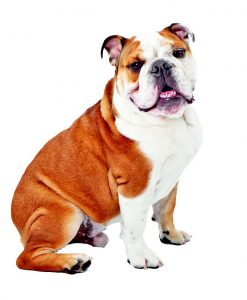Understanding Lower Urinary Tract Disease
In order to understand stone formation, we must explain very accurately the main reasons or causes for stone-formation known in veterinary medicine as urolithiasis.
First, there is a physico-chemical (physical) explanation: Have you ever seen how chocolate or coffee settles down at the bottom of the cup after some time? That’s the physical aspect of crystal formation of urine. The liquid portion is the solvent. The solid part is the solute. If there were much solvent (liquid), the likelihood of sediment formation (crystallization) is unlikely. That simply means that giving lots of water to drink to our pets both dog and cats have huge implications as to whether they will form bladder stones or not.

a. The chemical aspect is trickier in that you need to account for concentration of crystallizing ions. This means you need to account for things like ph (different substances and solvents). This may exasperate my readers. It’s quite complicated: defined temperature, nature of crystals, their pH or “acidity” are to be considered. The degree of supersaturation affects so called crystal nucleation, growth, and aggregation-the perfect storm of urine crystal formation. (Reference: France, Yann Queau, Vince Biourge. Urinary Relative Supersaturation and Urolithiasis risk. Veterinary Focus. 2014. Vol.24, Issue number three pp. 24-29).
- The infection-induced, visible by x-ray diagnostics stone (magnesium, ammonium, phosphate or MAP stone; struvite). In this case, there was evidence of bacterial infection in dogs as is seen in the urine culture, alkaline urine. Very often, veterinarians would advise the mechanical removal of stones in case of obstruction, by retropropulsion or hydropropulsion, or initiate medical dissolution protocol with the use of antibiotics, or a dissolution diet, or promote water consumption. In the case of struvite, the pH of urine is usually alkaline. Oftentimes, the case is presented with cases of difficulty in urination as well as bleeding. In my experience, I have to perform surgery upon seeing that the stone was occupying a large part of the bladder, making an animal urinate again and again (incontinence). After radiographs, I decided to perform the surgery in the bladder since the stone was as big as a fist.

b. Oxalate urolithiasis are stones that are visible by x-ray and are found to be present in acidic urine. These when found can be treated by removal through surgical means as in the first type mentioned above. In the absence of Lower urinary tract signs veterinarians will usually institute preventive measures by promoting water consumption, restrict dietary oxalate, sodium, protein if quantitative findings. (Faunt, Karen K. Oxalate Uroliths. Clinical Veterinary Advisor. (pp.1588-1589). MO.Mosby Elsevier. ©2007 A urinalysis is a group of manual and/or automated qualitative and semi-quantitative tests performed on a urine sample. Urine ph must be in between the normal limits 6.5-7.2, specific gravity at <1.02. At this point, hopefully, oxalate stones would have dissolved.
- The genetic connection. Dalmatians are very prone to urate stone formation owing to a confirmed genetic mutation affecting purine metabolism leading to urate stone formation. Perhaps in the cat such a genetic mutation has not been established.

- Congenital (upon birth) or acquired (secondary to a medical condition) porto-vascular anomalies predispose dogs to urate stone-formation. To clear things up, congenital does not mean genetic. Congenital means occurring upon birth while genetic definitely means dictated by DNA and has an inheritance pattern
- Other breeds thought of having a DNA mutation include the English Bulldog, Black Russian terrier, and the Yorkshire terrier. In order to conclude a genetic tendency, a genetic test must be done for non-Dalmatian carriers. This makes sense when you are a breeder or intend to be one. (Villaverde, C.2014. Urates in Bladder disease.Veterinary Focus 24 (1). pp.10-14.
This appeared in Animal Scene magazine’s July 2018 issue.






